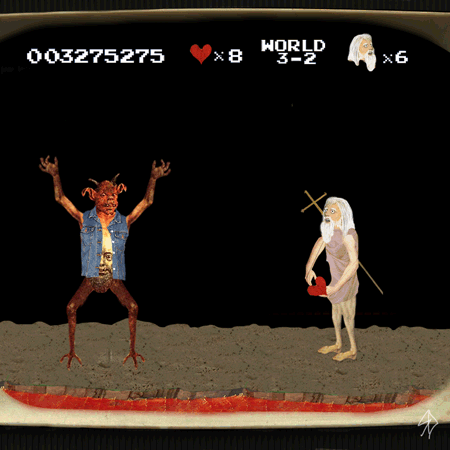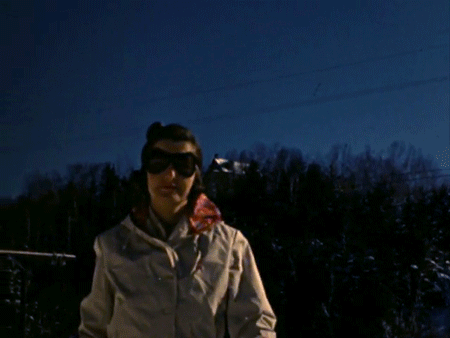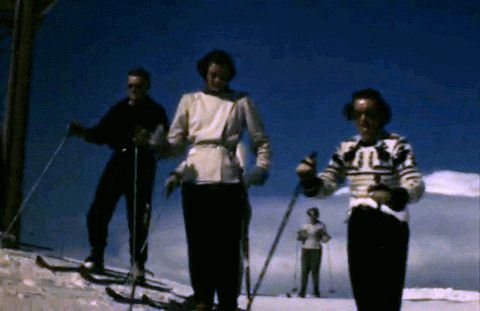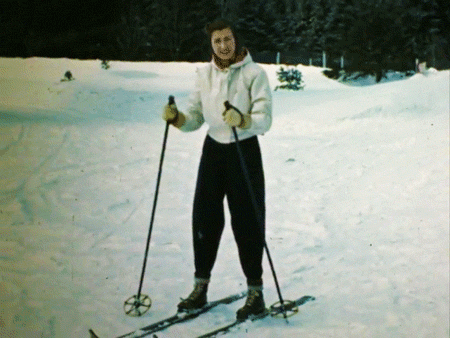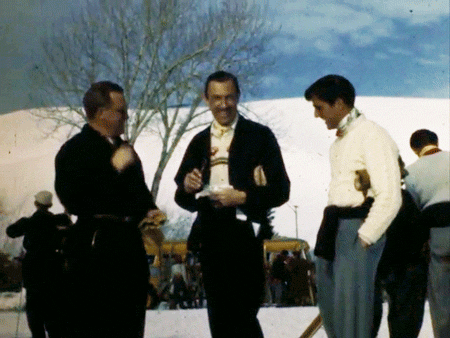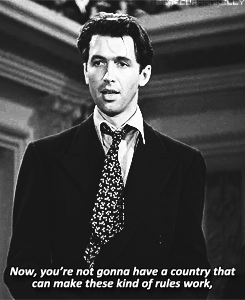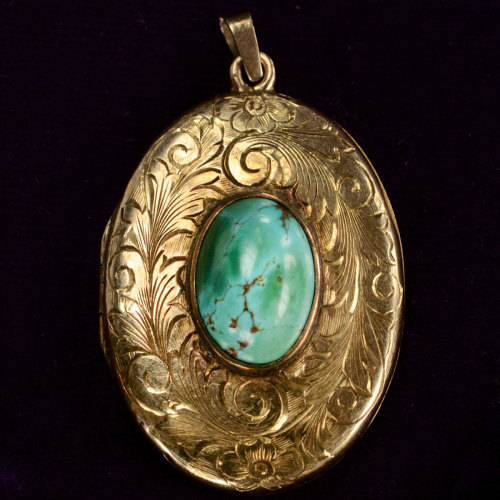Russian Sledges
Shared posts
tumblr_mjb5isyJUy1rr262ho1_400.gif (GIF Image, 328 × 238 pixels)
Space Noir
Russian Sledgesvia Carnibore
 [Image: The International Space Station at night, photographed by astronaut Alexander Gerst, courtesy of the ESA].
[Image: The International Space Station at night, photographed by astronaut Alexander Gerst, courtesy of the ESA].The European Space Agency recently released a group of photos taken by astronaut Alexander Gerst showing the International Space Station at night. The only real contextual information provided is that "the six astronauts on the weightless research centre live by GMT, and generally sleep at the same time."
 [Image: Photo by Alexander Gerst, courtesy of the ESA].
[Image: Photo by Alexander Gerst, courtesy of the ESA].Gerst—so close to Geist!—thus took advantage of the downtime to produce some images that make the ISS look uninhabited, a dead mansion rolling through space.
 [Image: Photo by Alexander Gerst, courtesy of the ESA].
[Image: Photo by Alexander Gerst, courtesy of the ESA].This is perhaps what it would look like to arrive somewhere in the middle of night, hoping to say hello to your comrades, only to find that you've actually boarded the Mary Celeste.
 [Image: Photo by Alexander Gerst, courtesy of the ESA].
[Image: Photo by Alexander Gerst, courtesy of the ESA].The dimly lit corridors of this house of sleeping astronauts take on the atmosphere of film noir, as if this is secretly a crime scene, still flickering with the last lights of its drained batteries, and these are the first photos to be taken upon arrival.
 [Image: Photo by Alexander Gerst, courtesy of the ESA].
[Image: Photo by Alexander Gerst, courtesy of the ESA].Small details take on narrative suspense. Why was that cupboard door left open, its contents bare for all to see? And are those objects messily scattered about, as if a struggle has taken place, or is this just the normal state of things in zero-g?
Where is everyone? Imagine performing forensic crime-scene analysis in the absence of gravity, three-dimensionally reconstructing a moment of violence by tracking objects back along all of their possible trajectories; you would need holographic models of every legally admissible collision and variation.

 [Images: Photos by astronaut Alexander Gerst, courtesy of the ESA].
[Images: Photos by astronaut Alexander Gerst, courtesy of the ESA].In any case, to browse more of astronaut Gerst's collection, you can basically start at this image and click backward through the rest; one or two, unfortunately, feature other astronauts drifting around, perhaps staring down at the earth through the red eyes of insomnia, which ruins the illusion of this being a ruin, but the photos are still worth a glimpse.
 [Image: Photo by Alexander Gerst, courtesy of the ESA].
[Image: Photo by Alexander Gerst, courtesy of the ESA].Finally, proving that international scientific organizations have an active sense of humor, the photos were actually released on Halloween.
Some Alternatives: Brands, Bands, Sell-Outs and Meltdowns Pt. I
Night Market Brings Asian Style Street Food to Harvard Square
Long-Lost Painting Was Being Used as a Hollywood Prop

A long-lost Hungarian masterpiece was hiding in plain sight all along —as a prop on the set of the Stuart Little movie.
Arcadia National Bar
Russian Sledgesvia otters
An Arcade and Bar in Portland, Maine.
!!!!!!!!!!!!!!!!!!!!!!!!!!!!!!!!!!!!!!!!!!!!!!!!!!!!!!!!!!!!!
Russian Sledgesvia rosalind ("!!!!!!!!!!!!!!!!!!!!!!!!!!!!!!!!!!!!!!!!!!!!!!!!")
!!!!!!!!!!!!!!!!!!!!!!!!!!!!!!!!!!!!!!!!!!!!!!!!!!!!!!!!!!!!!
BOBCATSSS
Russian Sledgesbest conference acronym?
Creed Singer Releases More Bizarre Videos, Says Heads Ready to Roll
Russian Sledges"We've taken God out of everything—we won't allow kids to pray to Christ or God in our public schools, but we sure will make allowances for Muslims and Hindus and Buddhists to have their freedom of religion."

Following up on an earlier "Public Statement" that revealed he was "penniless" and had been living in his truck, Creed signer Scott Stapp uploaded two more rambling videos this week, discussing his financial troubles, the removal of God from American life and the vengeance soon to find those who have wronged him.
War and Peace in the Bhagavad Gita
Russian Sledges'Richard Davis’s book on the Gita is more than adequately respectful: he leans over backward to avoid offending Hindus who revere the Gita. But leaning backward is not always the best posture in which to do scholarship.'
The Bhagavad Gita: A Biography
by Richard H. Davis

How did Indian tradition transform the Bhagavad Gita into a bible for pacifism, when it began life as an epic argument persuading a warrior to engage in a battle, indeed, a particularly brutal, lawless, internecine war?
Tugce Albayrak: Germany pays tribute to student killed for helping harassed women - Europe - World - The Independent
peoplemask: larissafae: whatamievensaying: annabellioncourt: ...
Russian Sledgescf. https://en.wikipedia.org/wiki/Bisclavret
"The king's men put the clothing before the wolf, but he ignores it. The wise man advises them to take the wolf and the clothing into a bedchamber and let Bisclavret change in privacy. Bisclavret does so and when the king sees again his beloved baron, he runs to him and embraces him, giving him many kisses."

There’s a lovely old English myth that if someone who truely loved and trusted the werewolf called it by name that it would turn back to human.
Others include throwing their human clothes at it and it’d turn back but that’s a bit less romantic
#ok i understand ppl would take the romancey route here#but imagine the werewolf’s mother#or grandmother#some wizened old woman or middle aged woman#with wrinkles or hands toughened from years of labor#just going out into the woods#where even the men with axes won’t go anymore#and facing down the ravening beast#and saying#it’s time to come home
Or the grandmother throwing the werewolf’s clothes at it and being all “God damn it Jerry, put your fucking clothes back on.”
I am right here for the grandma vs werewolf stories.
nocoolguys: cultureunseen: Toshiro Mifune April 1, 1920 -...
Russian Sledgesvia Nathan Fhtagn
<3
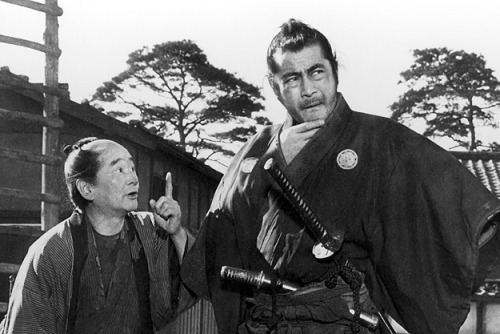
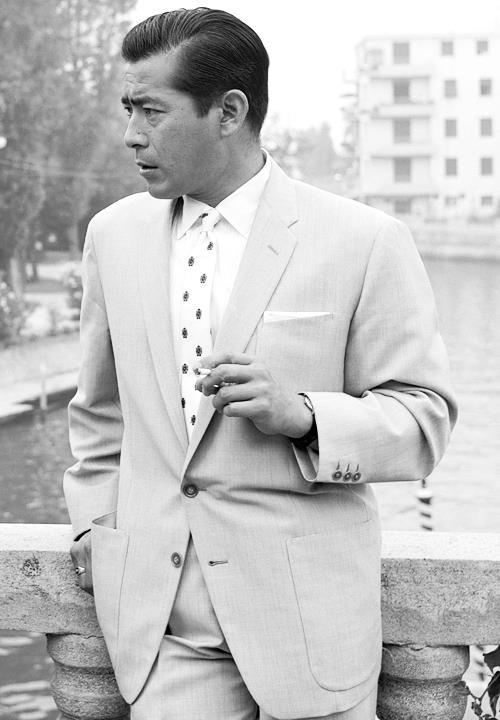
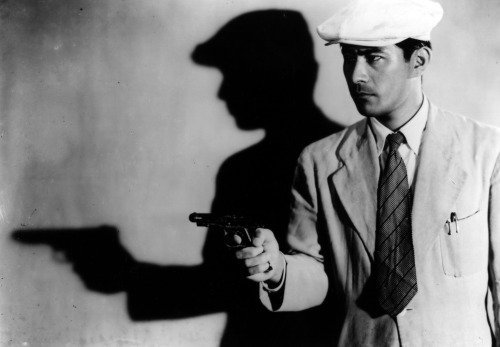
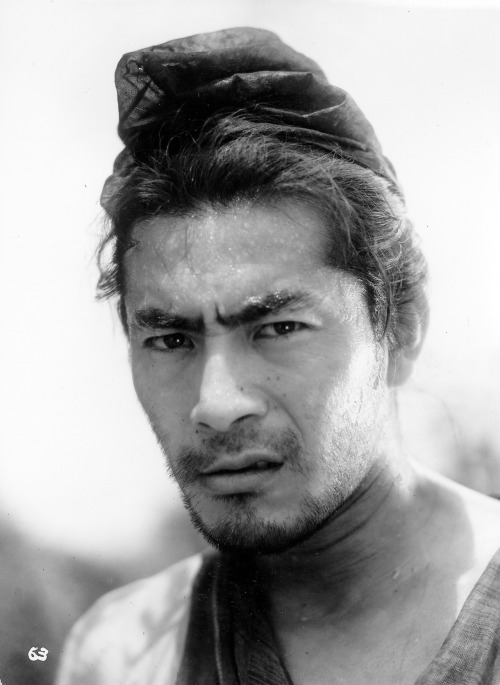


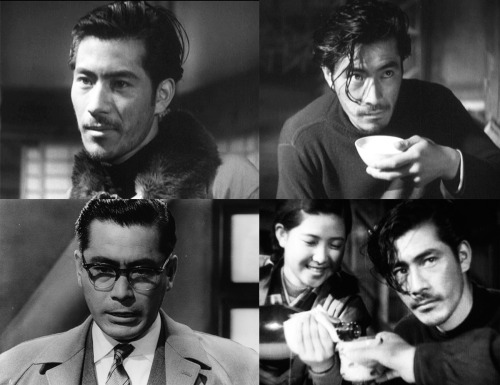

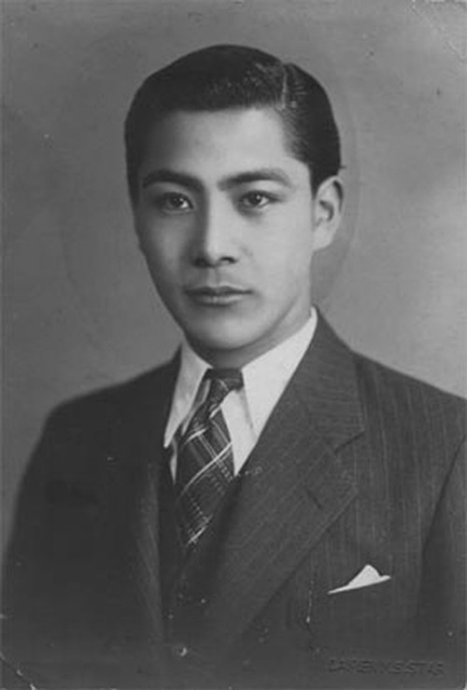

Toshiro Mifune
April 1, 1920 - December 24, 1997
Born Badass Kool replete with cigarettes…When I get old and stop being punk you best believe I’m gonna hit up this “old Japanese man in repose” look.
PEARL HARBOR: AFGHANISTAN WAR VET OPENS KITCHEN IN FOOD-LESS JP DIVE
Russian Sledges!!!

IMAGE BY MIKE SHWARTZ
On a Saturday morning just after 11am, Albert Pisani is peeling the translucent skin off onions he sliced the night before. He put them through a multistep process: rinse, dip in batter, and toss in breadcrumbs. He makes four onion rings at a time.
“We’re a dive bar and we represent the ’70s and the ’80s,” says Pisani. “I want to keep some of the food like that.”
In September, Pisani reopened the long-unused but sparkling kitchen at Drinking Fountain, a decades-old Jamaica Plain bar. He named it Hidden Pearl, after his mother Nancy Pearl Pisani, a career diner cook.
Mother and son both tend bar at the Drinking Fountain (“My little motto is ‘Entertainment first, drinks second,’” said Albert), where old framed newspapers announce victory in World War II and drink prices are handwritten. Regulars build jukebox playlists, enjoy two pool tables, and seize any opportunity to talk about their kids. Off-duty bartenders are often in for a drink. A Keno agent takes numbers. All of them love the menu Pisani and his mother put together.
The burger ($7) is seasoned with ginger and Sriracha (“Eight ounces of hamburger meat tastes disgusting if it’s not seasoned a little bit, in my personal opinion,” said Pisani). The French fries ($3.75) are perfectly soft/crispy/salty. Dipping sauces include creamy roasted sesame ($0.50). He may add chili, goulash, and Arizona-style hot dogs.
At the time of this writing, both the lone Chowhound reviewer and the lone Yelper called Pisani’s onion rings ($4.75) the best they’d ever had. The chicken tenders ($3.50 for two, $10.50 for ten) are the best I’ve ever had.
“I make the chicken, he makes the onion rings,” said Nancy.
Albert, an Afghanistan war veteran who lives in an apartment upstairs, started working at the bar because he was broke. He asked the owners, sisters Linda Hardy and Elizabeth McDermott, if he could clean. They said yes. Pisani moved up from janitor to Keno, and Keno to bartender. He started pushing to reopen the kitchen, but the owners were reluctant. One afternoon he turned the TVs on to an episode of “Bar Rescue”. The featured bar was failing because it didn’t serve food.
Soon after, the sisters let him open the kitchen. Pisani’s eyes water up whenever he talks about the chance they’ve given him.
The Hidden Pearl is not on social media. It had no grand opening. It’s a new addition to an old place.
“One of my guys comes in and gets two hot dogs with extra crispy fries. That’s not how we make them, but I’ll make them for him like that,” said Pisani.
THE HIDDEN PEARL AT DRINKING FOUNTAIN. 3520 WASHINGTON ST., JAMAICA PLAIN. 617-522-7335.
▶ DARIA WERBOWY - Thunder Perfect Mind - Prada - HQ - YouTube
Russian Sledgesa prada ad featuring a nag hammadi text
http://www.pbs.org/wgbh/pages/frontline/shows/religion/maps/primary/thunder.html
Jasper Johns Refuses to Play by the Book
Russian Sledges#fyb

Jasper Johns, “ookook” (1957) (courtesy of Craig F. Starr Gallery)
Currently on view in the exhibition Jasper Johns: Sculptures and Related Paintings 1957–1970 at Craig F. Starr (November 7, 2014–January 23, 2015) is “Book” (1957), a work I suspect many people either don’t know about or are not likely to have seen, even in reproduction. It is certainly not one that will come quickly to mind when thinking about Johns’s oeuvre. It was included on the checklist of the catalogue published on the occasion of his first solo museum show in New York, Jasper Johns, which was organized by Alan Solomon at the Jewish Museum (February 16–April 12, 1964), but it wasn’t reproduced. After that, there are, as far as I know, only rare sightings of this obscure work.
Given that Johns is known to repeatedly return to a small but slowly growing set of objects, such as the American flag, a light bulb and a Savarin can filled with dirty paintbrushes, this particular work is an anomaly, something he seems not to have revisited. There are no drawings or prints of it, for example, as there are of nearly every other thing in his first exhibition. Made of a found object, “Book” (1957) is an open book that the artist has painted over with red, yellow and blue encaustic and subsequently mounted in a wooden shadowbox frame.
“Book” was finished the same year that Leo Castelli opened his gallery on East 77th Street, where he included “Flag” (1955) in a group show in May. Johns showed “Book” in his first, groundbreaking exhibition, Jasper Johns, at the gallery (January 20–February 8, 1958), which, as we know, changed art history. In contrast to the “flags,” “targets,” “numerals” and “alphabets” in his first show at Castelli, “Book” is not considered an iconic work. For reasons that aren’t clear, it was included in the wonderful, massive, eye-opening, grab bag exhibition, The Spiritual in Art: 1890–1985, which was organized by Maurice Tuchman with the assistance of Judi Freeman at the Los Angeles County Museum of Art (November 23, 1986–March 8, 1987). The Spiritual in Art: 1890–1985, an exhibition that devoted an entire gallery to Hilma af Klint, was an unlikely place for Johns’ “Book,” which hardly seems spiritual or, although covered in encaustic, even occult. At the same time, it isn’t literal, but neither were his “flags” and “targets.’
There is a widely accepted view of Jasper Johns’s first exhibition that goes like this: with his “flags,” “targets,” “numerals” and “alphabets,” he integrated representation and abstraction, as well as made art about art (the flag, like a painting, is flat and two-dimensional), showing his peers a way to bypass Abstract Expressionism. Many critics pointed out that the numerals and the letters of the alphabet did not number or name anything in the world and were therefore abstract paintings in which a grid and repetition played a central role. Also, his all-white American flag further opened up the possibilities of monochrome.
According to this view, Johns’s early work ushers in Pop Art and Minimalism. Some critics, particularly those preoccupied with terminal progress, narrow the view further and describe his brushstrokes of hardened encaustic as the bridge between Abstract Expressionism’s volatile brushwork and Andy Warhol’s use of mechanical reproduction, the latter cited by many experts as signaling the death of painting. All of these narrative-driven viewpoints have had obvious consequences for art. They also had a well-argued agenda, which emphasized formal innovation and the paradigm of progress.
One problem, however, as Barnaby Wright points out in his essay, “Jasper Johns – Regrets” (2014), which is included in the catalogue accompanying the exhibition, Jasper Johns: Regrets, at the Courtauld Gallery, London (September 12–December 14, 2014), is that Johns has never shown any affinity with “the populist imagery of Andy Warhol or the ‘objective’ flatness of Frank Stella.”
Here, another narrative emerges, which pits Johns’s remoteness against Warhol’s popularity, and deduces that the former is intellectual and elitist, while the latter is brilliantly in touch with his audience and therefore democratic. This isn’t just a strain of anti-intellectualism, but a deep-seated mistrust of artists and writers who want to put everything into their work, including their intelligence, which the best ones know won’t save them. One reason people embrace Marcel Duchamp is because they think he was kidding and that the urinal was an ironic joke. I think they are wrong.
All of these narratives, which imply an objective or utopian goal that art should aspire to, are modernist fairytales. We are like children who want a story to have, if not a happy ending, then at least a soothing one. Postmodernists (or, as I sometimes think of them, bitterly disappointed modernists), with their declaration of the death of the author, of painting and originality, alongside their claim that de-skilling is a historical necessity, spend their time concocting another set of fairytales, which they teach in universities under the guise of Truth. The fact is that Johns didn’t buy into any of the modernist fictions — even those that originated with artists such as Piet Mondrian and Kazimir Malevich — from the beginning. He seems to have no interest in postmodernist fictions, either. Johns is a skeptic who thinks that any promise of fulfillment is an illusion. He was never interested in pictorial states of objectivity, purity, opticality, presence, immanence or in stopping time. He certainly did not wish to be associated with, or even try to accommodate his work to, an aesthetic agenda.

Jasper Johns, “The Critic Smiles” (1959) (courtesy the artist and Craig F. Starr Gallery)
This is what critics either conveniently overlook or deeply resent in Johns, particularly if they are nostalgic for the 1960s when they were influential. He never became, in historical terms, a mainstream artist, never joined the parade that sprang up after him in the early 1960s. He didn’t align his work with either Pop Art or Minimalism. And he certainly didn’t join any of the clubs associated with a style, technique or subject. Instead he went his own way and, more to the point, he exposed what he thought of critics in two sculptural objects, “The Critic Smiles” (1959), a well-known work depicting a toothbrush with human teeth instead of bristles, which is included in the exhibition at Craig F. Starr, and “The Critic Sees” (1961), which replaces the critic’s bespectacled eyes with a pair of mouths. And with his painting titled “According to What” (1964), he seems to be calling all objective aesthetic agendas into question.
In “The Critic Smiles” and “The Critic Sees,” Johns focuses on the theme of eating (or consumption), which evokes the production of waste, something it shares with Duchamp’s urinal, which is, it is worth remembering, titled “Fountain” (1917). In substituting teeth for the toothbrush’s bristles in “The Critic Smiles,” he reminds us that cleanliness and dirt are an inseparable cycle in which decay is inevitable. “The Critic Smiles” exists on the opposite end of the spectrum occupied by such mainstream art works as Andy Warhol’s Brillo boxes and Jeff Koons’s Plexiglas-encased vacuum cleaners because neither of the latter two acknowledges disintegration’s inevitability. In his creepily fascinating “Death and Disaster” paintings, Warhol looks at death from the vantage of a voyeur, a bystander who will escape notice.
As we learn each day, capitalism and the industrial nations have yet to adequately deal with the production of waste and its deleterious effects on the planet. At the same time, and this is what gives “The Critic Smiles” its dark, malicious twist, the combination of a lead-like toothbrush mounted with teeth suggests that Johns sees a critic as a kind of civilized cannibal whose job is to clean up the art being looked at, while tearing it into pieces. Moreover, he identifies the relationship between art critic and art as a power struggle in which the critic is a parasite who lives off art rather than illuminates it. There are exceptions, of course, with Frank O’Hara and David Shapiro being among them.
“According to What” is a seven-by-sixteen-foot painting in which six canvases have been joined together, and to which a number of disparate objects have been attached. From a historical perspective, it is even more astounding that during mid-60s, when critics were promoting flatness, all-overness, the purely optical, objectivity and accessibility as the highest goals of contemporary art, Johns makes a confounding painting that incorporates a silkscreen of a newspaper as well as three-dimensional objects that project from the surface, including aluminum letters spelling out “RED YELLOW BLUE,” a small, backward-facing stretched canvas, a bent coat hanger, and a cast of a leg attached to a chair. Along with these disparate objects, Johns has juxtaposed several painting methods: Abstract Expressionist gestural brushwork; monochrome passages; thin washes; drips and spatters.
In “According to What,” which precedes the first known use of the word indexical by seven years, Johns aligns himself with the strain of modernism that embraces complexity and multiplicity — what many people disparagingly refer to as the “difficult” or, as they are apt to say, the “obscure.” This approach attests that there is neither a single vocabulary, nor a single way. Johns may circle back to a small set of objects and motifs, and seem compulsive in his refusal to let something go, but at the same time he is restless, paradoxically so. It is this combination of habitual and agitated that seems central to his art.
In “Book,” Johns made another of his preoccupations clear: he wanted to paint time, not try and act as if art could stop it. Perhaps this is a reason why he chose not to revisit the motif. Time is the universal leveler, and its passing is something we inhabit and cannot step away from, however much capitalism’s products and mainstream art say otherwise. A book admits time’s existence, even an open book whose facing pages Johns has covered with red encaustic. But the layer of red-pigmented wax doesn’t cover all the words. You just have to look and look again. I think there is something poignant and vulnerable about the fact that these two words are discernible near the bottom of the right hand page: “he found….”
Jasper Johns: Sculptures and Related Paintings 1957–1970 continues at Craig F. Starr Gallery (5 East 73rd Street, Upper East Side, Manhattan) through January 23.
heytoyourmamanem: NAACP Photo, undated Scurlock Studio Records,...
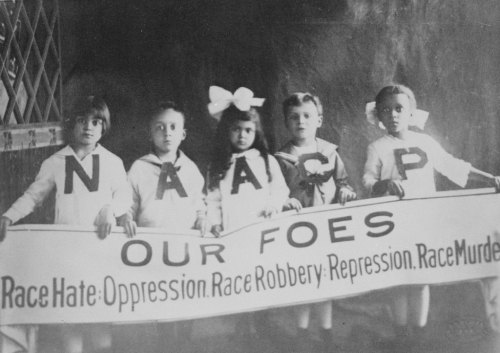
NAACP Photo, undated
Scurlock Studio Records, ca. 1905-1994, Archives Center, National Museum of History
Historical Map: Graphical Time Table for Steamer Routes in the...
Russian Sledgesvia firehose

Historical Map: Graphical Time Table for Steamer Routes in the Sognefjord, Norway, 1907
A beautiful early example of a stylised transportation map, showing routes and departure times for steamer ferries along the Sognefjord in Norway (the third longest fjord in the world, apparently), way back in 1907. While the “crinkly bits” of the fjord itself and the locations of the ports of call are faithful to geography, the routes themselves are overlaid with little regard to reality. Instead, they travel smooth, easy to follow paths that make the route of each individual ship easy to follow. Days of service and times of departure are also clearly denoted at each stop along the way.
Our rating: A lovely model of simplicity and clarity, and also really quite beautiful. Four stars!
![]()
Source: BBB1945/Flickr
america-wakiewakie: Happening Now! Oakland Youth Block BART...
Russian Sledgesvia firehose
|
Courtney
shared this story
from |
Happening Now! Oakland Youth Block BART from Funneling Shoppers into Black Friday San Francisco
Justice for Mike Brown y’all! Direct action. Keep this going!
(Photo Credit: Twitter)
Update: Photos added.
Wizard People, Dear Readers, presented by erikkennedy.com
Russian Sledgesvia firehose
Chinese government wants broadcasters to stop making puns
Russian Sledges'Chinese Internet rights activists have adopted the “Grass Mud Horse”—a fictional alpaca-like creature whose name, Cǎonímǎ, roughly translates to “fuck your mother” in Mandarin—as an anti-censorship meme.'
Newswire: Scott Stapp gently taps the brakes on his public meltdown
Russian Sledges#nevergo

Three days ago, Scott Stapp posted a 15-minute video on his Facebook page that might charitably be described as delusional. In it, the Creed frontman describes how the IRS and “the banks” are attacking him and stealing his money—and how he’s so broke that he can’t eat and has been sleeping in his truck. This all presumably stems from the fact that Stapp’s wife Jaclyn recently filed for divorce, citing Stapp’s abuse of amphetamines, crystal meth, and steroids, according to the Miami Herald. (Stapp and his family live in Florida.) In the filing, Jaclyn included text messages purportedly from her husband, including such lines as “Florida is not safe. Biological weapons on the way. U have to leave with kids and meet me in Atlanta.” TMZ has reported further troubling allegations against Stapp, including calls to his son’s school claiming that ISIS is going ...
A Nine-Page Feature on Trick Dog's Caitlin Laman
Russian Sledgesvia firehose
The fine folks at the Bay Area Newsgroup, which includes newspapers the San Jose Mercury, Oakland Tribune, Contra Costa Times, and others, asked me to write a long profile of Trick Dog's Caitlin Laman, so that's what I did.
The story comes out in this Sunday's Eat Magazine, an insert into all those papers. I'm not sure if it's going online in traditional format, but here it is in Issu, the online magazine format. If it comes out as traditional text I'll share the link.
They did a nice job! Lots of photos and a lovely layout.
The article also includes illustrated recipes by 8 Bay Area bartenders:
- Caitlin Laman of Trick Dog
- Suzanne Long of Longitude
- Nick Kosevich for Mortar and Pestle
- Antoine Nixon of Jack's Oyster Bar and Fish House
- Russ Stanley of Jack Rose Libation House
- Jimmy Marino of The Lexington House
- Brandon Clements of The Village Pub
- Andrew Majoulet of Rich Table
They asked for ten but chose eight - sorry if yours was one of the ones left out.
Go read the story here!
Related articles
Pixação, or why São Paulo looks like a death metal album cover
Russian Sledgesvia willowbl00
One of the first things I noticed about Sao Paulo was the graffiti. It’s everywhere, and it’s stylistically very striking – angular, highly stylized letters on walls, buildings, overpasses. It’s clear that it’s writing, not just glyphs, yet it’s difficult to parse the characters. When I try to decipher it, I feel as lost as I do trying to understand spoken Portuguese: it’s clear someone is communicating with me, and while I’m on the verge of understanding, I clearly don’t understand.
It took less than 15 seconds with Google to learn that this style of writing is called “pixação“, that it takes its name from the Portuguese verb “to paint with tar” and that it’s distinctive to southern Brazil, especially São Paulo. A few more links and I discovered that my curiosity about pixação is about five years too late if I wanted a new job as a “coolhunter”, as the phenomenon has been thoroughly explored – and leveraged – by designers and marketers around the world.
The video above, by Joao Wainer for coolhunting.com, did the best job of answering my questions about the writing style: what are people saying, and why are they choosing to say it this way. Pixação has its roots in the 1980s, a moment when Brazil overthrew a military dictatorship and emerged into an inspiringly participatory democracy and a depressingly unequal society. The original artists wrote political slogans, while current practitioners are tagging – they’re writing the names of the crews they write with as well as personal tags, which are often a non-alphabetic symbol.
What most sources make clear is that pixação doesn’t really take place at street level – it’s all about heights. The most ambitious crews scale the outside of multistory buildings so they can tag the highest floors, and there’s evidently fierce competition between crews to place tags in as visible and inaccessible places as possible.
Pixadores from James Post on Vimeo.
A documentary from Amir Escandari for Helsinki-Filmi focuses on the dangers of being a pixador, the coordination of the crews, and the politics of the art form. Simon Romero, writing for the New York Times, follows the political thread, interviewing writers who see their work as a form of class warfare, a way that marginalized classes can inscribe themselves on an economically divided city.
Other documentaries celebrate the politics as part of a romanticization of the practice and the lifestyle. “Os Pixadores” by Ben Newman looks like a sneaker ad, which is appropriate as it’s sponsored by Puma’s streetstyle brand. A band of attractive, multiracial kids do shockingly dangerous things while talking about the need to be heard. It’s not hard to imagine this message selling shoes in any economy.
Others have clearly fallen in love with pixação as typography. Gustavo Lassala has created a font – Adrenalina – that is based on his masters thesis studying pixação. He extrapolates from 800 photos taken in São Paulo to create a typeface that’s visibly related to pixação, but immediately readable, an impressive achievement. (His name for the font suggests that he, too, understands that graffiti can sell sneakers. Or perhaps a really badass guarana-based energy drink.) François Chastanet, a professor of graphic design, has written a lengthy tome on pixação, whose endpages feature dozens of different versions of each letter.
What I love about pixação is that it reminds me of death metal album covers, which inevitably feature the band’s name written in a jagged, angular script that’s incomprehensible on first glance. This, it turns out, is no accident. Metal, particularly the “New Wave of British Heavy Metal”, was the music of choice for early pixação writers. (Of course, anyone who’s ever banged their head rhythmically knows that Iron Maiden continues to exist primarily so they can tour Brazil annually.) Commentators trace the letterforms of pixação to album covers by Maiden, Slayer and others. I can’t really see it, myself – Maiden used a blocky letterstyle I associate with early 1980s videogames, and while Slayer and Motörhead both are somewhat angular, Napalm Death and especially Morbid Angel look like the most obvious precursor to the lettering style, though both bands postdate the emergence of pixação… which means there’s a band that had traction in Brazil and helped popularize the death metal style of writing, which I could probably find if I were only willing to crawl down another internet rabbit hole.
For the meantime, I am consoled that this dark and beautiful form of writing has a name and that I know it, even if I can’t really pronounce it. And that I’ve learned another tiny detail about this fascinating and overwhelming country.




